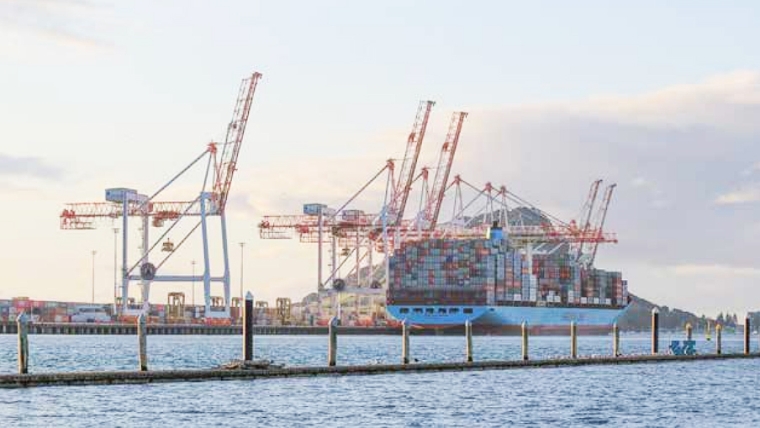
This content is supplied by Rabobank
Amidst significant global turbulence, New Zealand agricultural producers are poised to enjoy a fifth consecutive year of general profitability in 2021, according to a new report by agribusiness banking specialist Rabobank.
In the bank’s annual flagship report, Agribusiness Outlook 2021, Rabobank says while the outlook for the year is “bristling with risk”, and bumps are anticipated throughout the coming months, most agricultural sectors can expect to see average to above-average pricing, manageable cost inflation and production holding up well.
Report co-author, Rabobank senior dairy analyst Emma Higgins said as 2021 gets underway, the “world remains a turbulent place” for New Zealand’s agricultural sector.
“The Covid-19 pandemic continues to rage in many regions around the globe, the finer points of the messy Britain and the EU divorce are now in full swing, and tensions in the US remain high following an acrimonious transfer of power to the new Biden administration,” she said.
“More frequent use of market intervention is a further factor creating global instability as are ongoing trade wars which have distorted the direction and price of traded goods.”
Ms Higgins said while New Zealand agriculture had been unable to completely avoid the discomfort caused by this turbulence, the sector had “done much right to keep itself on a strong path”.
“New Zealand’s authorities and citizens have managed to control domestic spread of Covid-19 better than almost any other country in the world, while we also saw domestic agricultural supply chains pivot during the peak of infections last year, allowing these to stay open and continue to function at close to full capacity. In addition, we’ve seen diplomatic relations with key trading partners remain stable, keeping vital markets open,” she said.
“This may sound simple, however it’s a list of achievements that has eluded most countries and their ag industries in 2020 and early 2021. And given the extent of the turbulence, and compared to most other peers, New Zealand agriculture is travelling astoundingly well.”
Bumps ahead
While New Zealand agriculture is well placed, the report says 2021 brings more uncertainty than most years and there are a number of potential bumps which may need to be navigated in the year ahead.
“The pandemic in the US and the EU will probably not start to look materially better until quarter two as winter passes and the vaccine rolls out, while the current spike of infections in key Asian markets is now looming as a major threat for New Zealand agricultural exporters,” Ms Higgins said.
“Commodity-specific risks will also need to be tackled – such as the threat of Chinese dairy destocking, labour shortages in the horticulture sector and the impacts on the animal protein sector of China’s pig herd recovery – and we also expect to see New Zealand exporters facing a much stronger New Zealand dollar in 2021.”
China key watch factor
Ms Higgins said developments in the Chinese market shaped as the key watch factor for New Zealand agriculture in 2021.
“In the 12 months to November 2020, the share of New Zealand ag exports to this market came in at 31 per cent in value terms and, as a result, what happens in China in 2021 will be vital to shaping the year for New Zealand ag,” she said.
“Maintaining strong relations with China will be crucial for the sector. At present, New Zealand is treading a difficult path between standing up for its own values and its allies and the desire to constructively engage with a country offering a huge market, preferential access and the ability and willingness to pay for premium NZ product and supply chains.
“New Zealand seems well placed to manage these tensions, but this will become harder if China becomes more strident in its actions in the region and/or the US continues to push back.” Ms Higgins said.
NZ agri industry stakeholders would also be keeping a close eye on relations between Australia and China following their recent fallout. “Provided New Zealand does stay on good terms with China, it will be in a strong position to pick up market share if China further curtails access to its markets to Australian beef, sheep and seafood and/or extends restrictions to Australian dairy,” she said.
“Price gains will be welcomed, but directing more market share to China would raise big questions about market concentration risk.”
Commodity outlook for 2021
Dairy: Rabobank expects limited supply growth in competing regions and firm Chinese buying will bring not only a fifth consecutive profitable season for dairy farmers in 2020/21, but probably supportive pricing for early 2021/22.
Beef: Farmgate prices are expected to remain marginally below the five-year average through most of 2021 due to continuing food service restrictions, strong competition from South America and a high NZD.
Sheep: Weak foodservice and incomes in the EU and US will also impact demand for higher-value lamb cuts, pushing export returns below 2019/20 levels. But Chinese demand will help provide a healthy floor.
Wine: 2021 is expected to bring significant challenges in each of NZ’s three largest markets – the US, the EU and Australia. But those focused on retail channels are still well placed.
Horticulture: Demand for quality and safe horticultural produce will remain strong. Covid disruptions to labour supply may take the shine off this opportunity, while navigation of geopolitical tensions will be key.
Regulation: The agricultural sector will be hoping for greater clarity around how aspects of the freshwater reforms will be implemented in the future. But action is required despite the uncertainty.
1 Comments
Slightly off point, but spoke to someone in the UK today who friend is a gamekeeper. They have birds that need feeding but the cost of the grain feed has increased from £100 per tonne to £220. They can’t have shoot days as everyone is locked down. So they have a few woods full of pheasants, their food costs have more than doubled and there is no end in sight for lockdown. They are losing money every day.

We welcome your comments below. If you are not already registered, please register to comment
Remember we welcome robust, respectful and insightful debate. We don't welcome abusive or defamatory comments and will de-register those repeatedly making such comments. Our current comment policy is here.